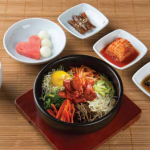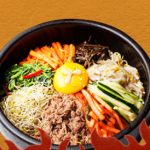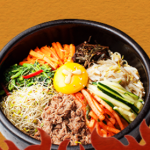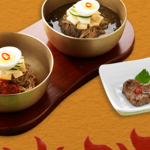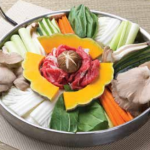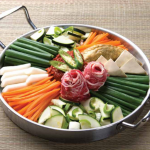Are you ready to embark on a spicy adventure? Join me as we explore the world of bold and fiery flavors, comparing the spiciness of Korean dishes to other international cuisines. From the vibrant streets of Seoul to the bustling markets of Mexico, we’ll discover how different cultures celebrate the sensation of heat in their cuisine. Let’s dive in and ignite our taste buds!
Introduction: A Taste for Spice
When it comes to spiciness, Korean cuisine is not one to shy away from the heat. Korean dishes, known for their vibrant flavors, often feature spicy ingredients like chili peppers, red pepper flakes (gochugaru), and Korean chili paste (gochujang). But how does the spiciness of Korean dishes compare to those found in other parts of the world?
The Fiery Journey Begins: Korean Cuisine
Korean cuisine is renowned for its diverse range of dishes, and many of them pack a punch in terms of spiciness. Look no further than everyone’s favorite spicy Korean dish: Kimchi. This traditional fermented side dish made from cabbage, radish, or cucumber, combined with chili peppers, will set your taste buds on fire. From the first bite, you’ll experience the perfect balance of tang and heat that is uniquely Korean.
While Kimchi dominates the realm of Korean spiciness, there are other popular dishes that test your tolerance for heat. The well-known Bibimbap, a rice dish mixed with vegetables, meats, and red chili paste, offers a harmonious blend of flavors with a subtle kick. For those seeking a real challenge, the infamous Spicy Korean Ramen, popularized through social media challenges, will leave you breathless and sweating.
A Global Comparison: Spice Around the World
Now that we’ve explored the fiery side of Korean cuisine, let’s discover how it stacks up against other international spicy dishes.
Mexican Cuisine: ¡Caliente!
Mexican cuisine is synonymous with spice. From salsa to tacos, their dishes are renowned for their heat and flavor. Mexican chili powders, such as ancho, pasilla, and chipotle, bring depth and warmth to their dishes. Spiciness is celebrated in Mexican culture, and their cuisine offers a wide range of dishes varying from moderately spicy to volcanic, so be prepared for a chili extravaganza!
Indian Cuisine: Heat That’s Worth It
Indian cuisine is a symphony of aromatic spices and vibrant flavors. Curries, such as the infamous Vindaloo, showcase the Indian love affair with chili peppers. The Scoville scale, which measures heat in chili peppers, was invented by pharmacist Wilbur Scoville while working on a pepper extract in India. With spices like cayenne, paprika, and chili powder, Indian cuisine will take you on a fiery journey you won’t soon forget.
Thai Cuisine: A Spice Oasis
Prepare to be enthralled by the captivating flavors of Thai cuisine. Thai dishes strike a balance between sweet, sour, and spicy, creating a harmonious explosion of taste. Thai red and green curry, infused with bird’s eye chili, ignite the senses and offer a delightful kick. The spiciness of Thai cuisine is often accompanied by a refreshing burst of citrus, making it a unique and unforgettable spicy experience.
Malay Cuisine: Sambal Sensation
Malay cuisine, rooted in diverse cultural influences, offers a fiery range of flavors. At the heart of Malay cuisine lies sambal, a chili-based condiment that accompanies an array of dishes. From Nasi Lemak to Laksa, Malay cuisine combines the heat of chili peppers with the richness of coconut milk, creating a symphony of flavors that will tantalize your taste buds.
Conclusion: In Spicy Unity We Feast
From the bold and fiery flavors of Korean cuisine to the heat-infused dishes of Mexican, Indian, Thai, and Malay cultures, our journey around the world has been exhilarating. Each cuisine has its own unique way of embracing spiciness, using it as a celebration of flavor and culture.
So, spice lovers, the next time you crave that fiery sensation, try branching out and exploring the cuisines that embrace the heat. Whether you’re savoring the heavenly heat of Kimchi or indulging in the tantalizing spiciness of Thai curry, let your taste buds take you on a global adventure where spice knows no borders.
FAQ
1. Are all Korean dishes spicy?
While spiciness is prevalent in many Korean dishes, not all of them are fiery hot. Korean cuisine offers a wide range of flavors, from mild to intensely spicy. So, you can certainly find dishes that suit your spice tolerance.
2. Is Korean food hotter than Mexican food?
Both Korean and Mexican cuisines boast fiery flavors, but the level of spiciness can vary. In general, Mexican cuisine tends to have a wider variety of spicy dishes, often incorporating diverse chili powders, creating a broad spectrum of heat. However, some Korean dishes, such as the Spicy Korean Ramen, can rival the heat levels found in Mexican cuisine.
3. Can I request less spiciness in Korean dishes?
Absolutely! Most Korean restaurants are accommodating and will gladly adjust the spiciness level according to your preferences. Simply inform the server about your spice tolerance, and they will customize your dish accordingly.
4. What makes Korean cuisine’s spiciness unique?
Korean cuisine is characterized by a distinct combination of spice, fermentation, and umami flavors. The use of gochugaru (red pepper flakes) and gochujang (Korean chili paste) provides a unique depth of heat, enhancing the overall taste experience and making Korean spiciness stand out.
5. Which Korean dish would be suitable for someone who can’t handle much spice?
If you prefer milder flavors, dishes like Bulgogi (marinated grilled beef), Japchae (stir-fried noodles with vegetables), and Galbitang (beef short rib soup) are great choices. These dishes offer a balanced blend of flavors without overwhelming spiciness.
Remember, the spiciness of any dish can vary depending on individual preferences and the chef’s preparation. Always communicate your spice tolerance to ensure an enjoyable dining experience.


